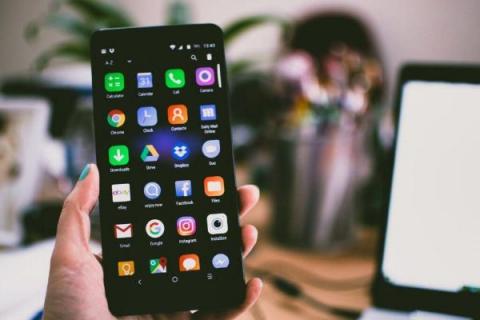Operations | Monitoring | ITSM | DevOps | Cloud
Latest Posts
Eight Cybersecurity Tips for Businesses in 2023
The online playing field for businesses in multiple niches has expanded, with the internet enjoying an overarching presence in various facets. New and larger markets have become more accessible through online platforms. All an established business needs is computer-based tools and an internet connection that won’t falter. Expansion is often rewarding but has its fair share of risks; thus, melding a nice blend of cybersecurity with a growing company is the safe way to go about it.
9 Foolproof Ways to Protect Your Employee Privacy
Cybercrime is one of the greatest threats to modern businesses, so naturally, cybersecurity is becoming a top priority among business leaders worldwide. It’s easy to see why. Cybercrime can result in significant losses for companies, particularly financially. In fact, the global cost of cybercrime is expected to rise to $23.84 trillion by 2027, up from $8.44 trillion in 2022. Businesses collect and store mountains of data daily, and are obligated to keep that data secure.
A Comprehensive Guide to Geofencing in Healthcare
Location-based marketing has been around for a while. Marketers have used ZIP codes to send personalized marketing messages to target audiences. However, these tactics are limited. For example, you can’t trigger ads in real-time or at the moment of highest intent. But what if you could target the right customers at the right place and time? Enter geofencing.
Facing the FinTech: How Remote Support Can Help Banks Compete
Banks are facing stiff competition from FinTech firms. When most people think of this head-to-head battle, they likely assume that the differentiator is technology. The banks have legacy solutions, while the FinTech firms have newer innovations. While this framing is accurate, it does not give the full picture. FinTech firms are not only turning to new technology for the sake of new technology – they are doing so in service of what matters the most in their industry: customer service.
What Android Enterprise means for MDM
With over 2.5 billion users, Android enjoys a dominant 85% market share in the mobile operating space. It does have one glaring weakness however: enterprise. Most businesses still favor iOS, the operating system of Apple devices like the iPhone and iPad. As part of Google’s bid to secure more of the enterprise market, Android Enterprise is a software platform that provides application programming interfaces (APIs) to developers who build MDM solutions.
How MDM Can Protect Against Generative AI Mishaps on Digital Displays
Generative artificial intelligence (AI) is defining 2023. Numerous tech companies, including OpenAI and Google, have put out large language models (LLM) that can be used by consumers directly, or integrated into other products via an application programming interface (API). Many companies are rushing to include generative AI into new or existing products. Some are even doing so in customer touchpoints, such as digital kiosks.
Best Digital Signage Growth Guide for Small Businesses
One of the aspects we appreciate about digital signage is that it promotes fairness. Unlike social media, pay-per-click (PPC), and online advertising, where coverage is often determined by budget, digital signage allows businesses of all sizes to compete equally. With digital signage, the cost of setting up and rolling out is determined by the number of screens you use rather than the number of competing companies. Digital signage is a versatile tool that anyone can easily set up.
POS Security: How to Protect Your Android POS Systems
The adoption of POS devices across industries is advancing, fast! Businesses including restaurants, grocers, and retail stores are seeing POS devices as a multi-functional hub that offers menu creation, tableside ordering, employee management, CRM, inventory management, and more. According to statistics, 59% of retailers made focusing on omnichannel capabilities their top POS priority in 2020.
The Advantages and Challenges of Remote Teams: A Comprehensive Guide
The global COVID-19 pandemic ushered in a new era of remote work. The Pew Research Center reports that over 71% of people had transitioned to working from home at the height of the pandemic. As of 2023, that number is still relatively high, with 59% of workers remaining at home though social distancing restrictions have long been relaxed. As remote work becomes increasingly common, many managers are considering transitioning to the new model.








